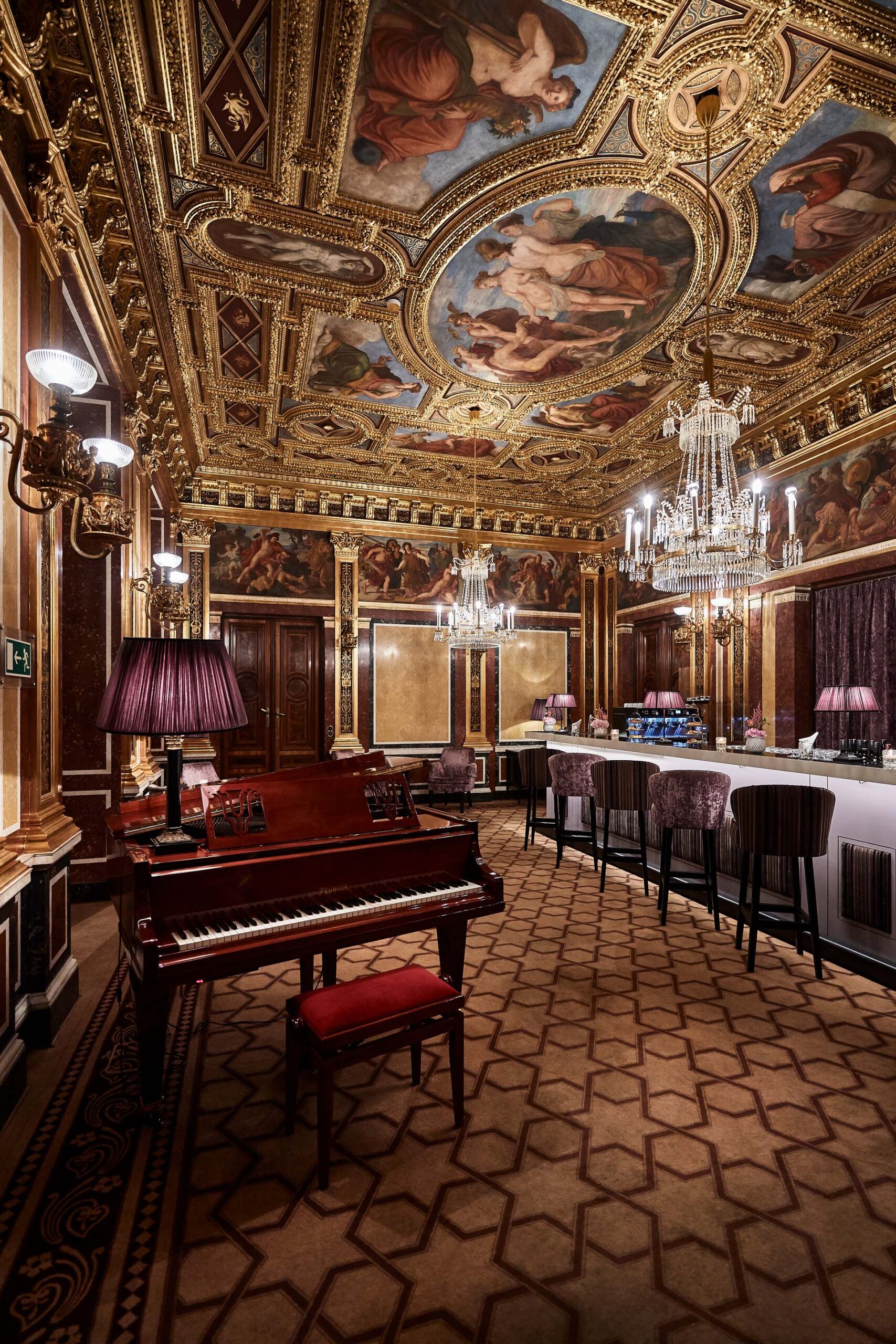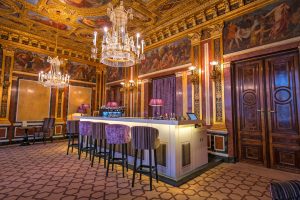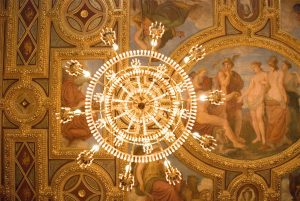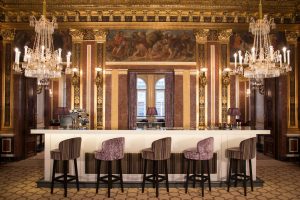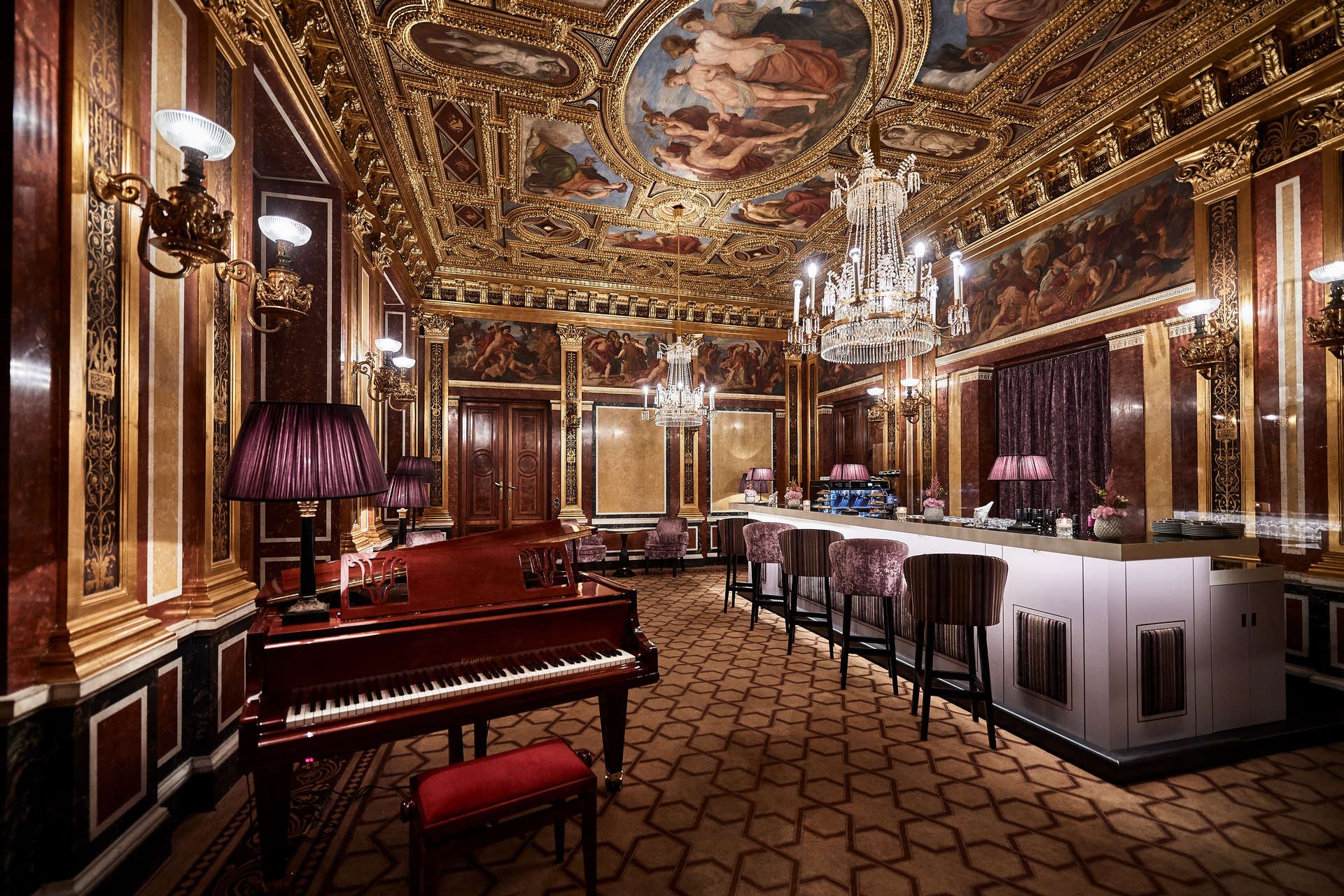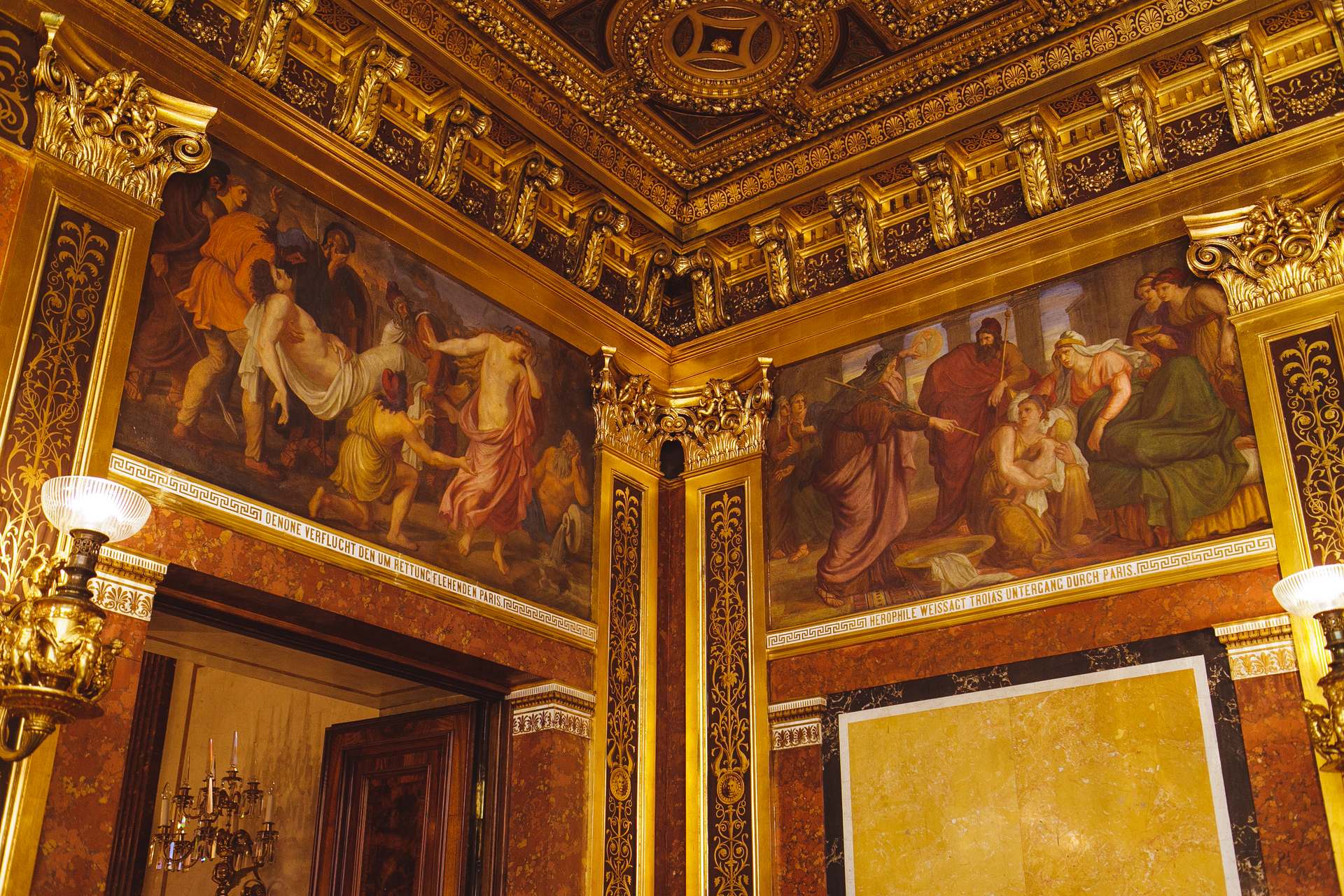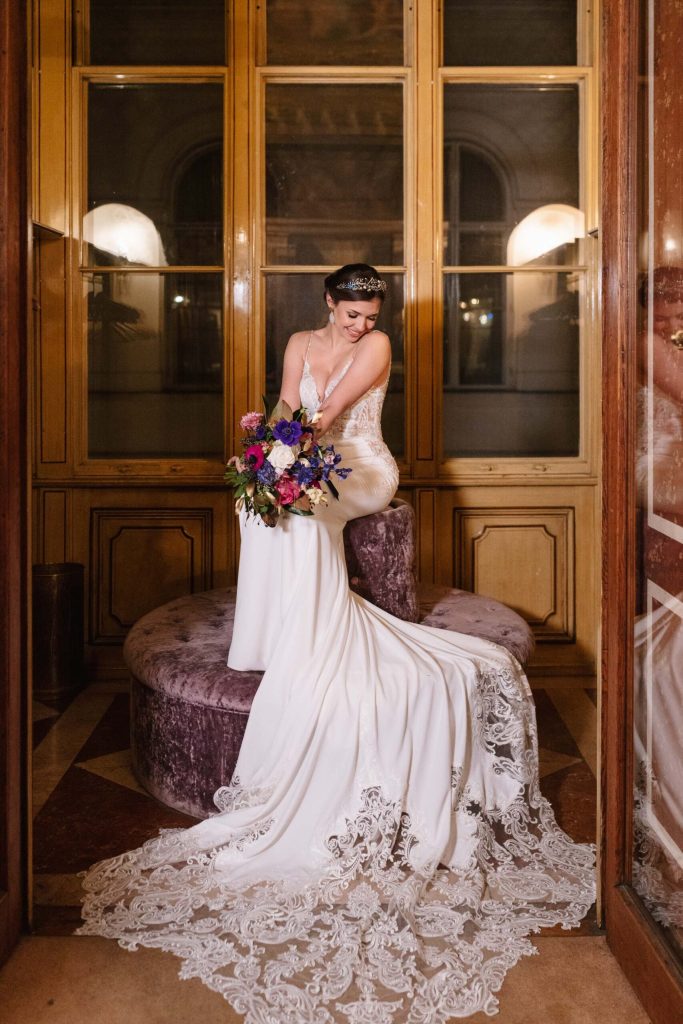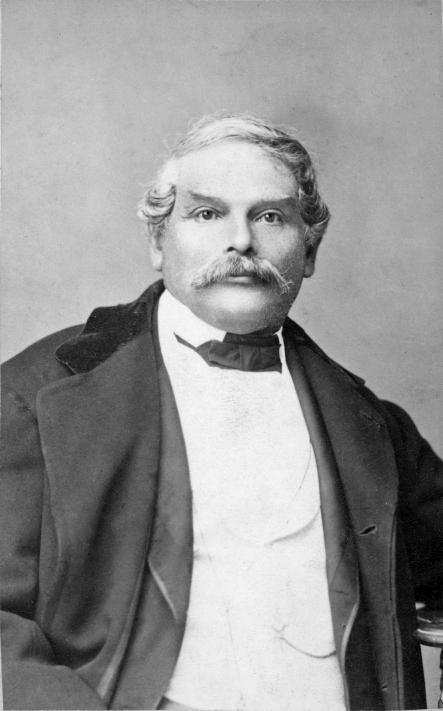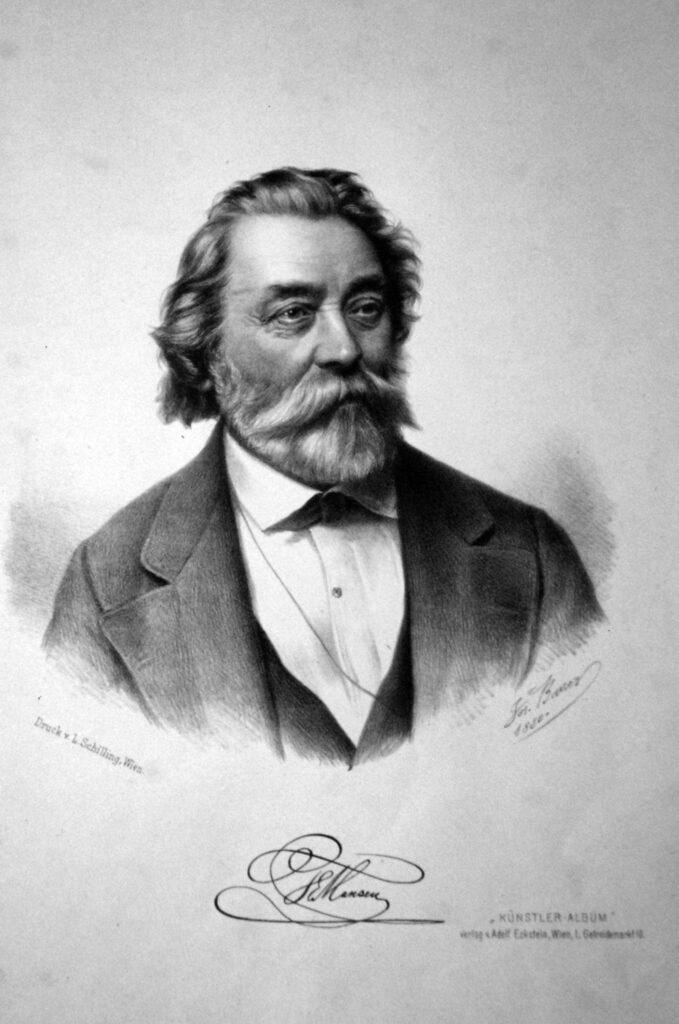Salon Paris
Marvel at the wonderful ceiling painting, a masterpiece by Carl Rahl called “Judgment of Paris”.
Home » Salon Paris
Salon Paris
Dining Room with Winter Garden
The interior design of the Ringstrasse palaces was just as important as their exterior and facades. Every detail was carefully planned to create a complete work of art. In the Palais Todesco, designed by Theophil Hansen for Eduard and Moritz Todesco, nothing was left to chance. The interior of these palace rooms is one of the finest examples of historicist architecture in Vienna.
When the newly completed palace opened its doors for the first time on May 5, 1864, for the wedding of Eduard’s daughter Fanny to Henry de Worms, it was widely admired and praised in the press. One article said, “The goal of art, the harmonious collaboration of all three sister arts, has triumphed in the magnificent dining room of Vienna’s Farnesina.”
Hansen and the painter Carl Rahl were said to have had complete creative freedom, which resulted in a perfect harmony in the rooms. Everything, from the sideboard to the footstool, from the chandelier to the smallest door handles, was designed with a unified sense of beauty.
The dining room in Palais Todesco was unique among Hansen’s Viennese buildings, with architectural detailing provided by pilasters. The ceiling is richly decorated with gilded stucco, a level of decoration usually reserved for grand ballrooms.
Christian Griepenkerl (1839-1916), who was responsible for most of the painting in Palais Todesco, also taught at the Vienna Academy of Fine Arts, where Egon Schiele was one of his students. Griepenkerl played a key role in rejecting Adolf Hitler’s application to the academy. His artistic work was closely tied to Carl Rahl’s studio, and Griepenkerl was responsible for transferring Eduard Bitterlich’s detailed sketches into paintings.
The ceiling features a classic coffered design, typical of historicist architecture. The central oval painting, by Christian Griepenkerl, depicts “The Judgment of Paris.” Surrounding it are personifications of Nemesis (goddess of justice), Fortuna (goddess of fortune), Elpis (goddess of hope), and one of the Moirai (fates of Greek mythology), all seated on clouds. Each is distinguished by their attributes, such as Fortuna with her cornucopia, Elpis leaning on an anchor, and Nemesis holding a whip.
Paris is shown with Mercury and Cupid, sitting in judgment of the three goddesses: Aphrodite, Athena, and Hera. The scene captures the moment Paris gives Aphrodite the golden apple, promising him the most beautiful woman in the world.
The rectangular sections of the ceiling depict Ilion, the personification of Troy, and Eris, the goddess of discord. Ilion is shown as a mourning woman, while Eris, with her snake wreath and torch, holds the golden apple that sparked the conflict among the gods. Eros and Nike appear in the oval sections of the ceiling, painted in shades of gray.
Karl Lotz painted five of the nine ceiling panels, closely following Rahl’s sketches. Both Griepenkerl and Lotz adhered to a consistent academic painting style, ensuring a unified aesthetic throughout.
The dining room opens into a glass-enclosed bay with a former marble fountain in the center, suggesting it was once a winter garden. This feature, borrowed from noble palaces, symbolized the mastery of nature. In the 19th century, these baroque-style artificial gardens were reduced in size to small enclosed spaces with fountains, offering a touch of nature to the wealthy residents of the Ringstrasse palaces.
